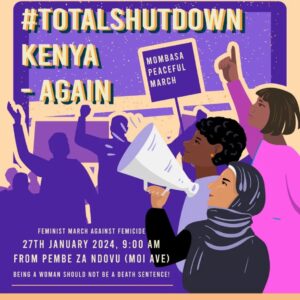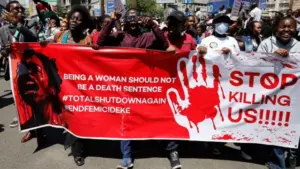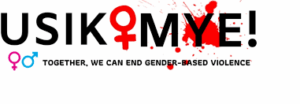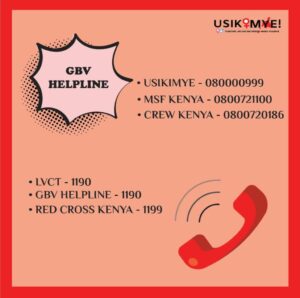By Wambui Teresa Okudo
A dark, persistent reality, Femicide. We lose a mother, sister or student to violence. The purpose of attacking or killing a woman because of their gender is an issue that demands immediate attention and a call to action. Over 500 women between 2016 and 2025 have been murdered across the country, not by a foe but by a relative or partner. The lives cut short and stories that follow paint a grim picture of the cost of this violence.
Femicide materialises in different forms rooted form systematic gender inequality or cultural norms. Numerous cases tend to stem from partner violence where women face threats or dominance, economic hardships or imbalance, where women are more dependent on their partner, which can pose a window. Husbands, boyfriends, and relatives are known to their victims as perpetrators (Standard, 2025). Societal attitudes normalise blaming the victim. Public debate often shifts focus from the offender to the victims, their presence, location, or attire (Nation Media Group, 2024).
However, individual stories, media reports and honest work from support groups help paint a picture. Public outrage comes from high and low profile cases, which serve as a reminder of the threats women face. These situations underscore the need for a shift in societal attitudes and norms to enhance law enforcement and strengthen legal frameworks.
The collective calls to end femicide have echoed all over Kenya!! Image by FeministsInKenya/#TotalShutDownKE
Activists chanted using slogans like #StopKillingUs, #EndFemicideKE. On January 27, 2024, more than 20,000 Kenyans marched in Nairobi, Kisumu and Nakuru demanding justice (ForumCiv, 2024).
Kenya Femicide Protest: Image by BBC News
Change Leaders and Anti Femicide Movement Image by Nguvu Collective
The Power of Online and community engagement has emerged for change. An example is Usikimye, which means “Don’t be silent” in Swahili. The #Usikimye movement on Instagram is a platform for Kenyans to share experiences, demand accountability and raise awareness on anyone facing violence. The hashtag is used by allies and across social media to capture attention, action and get justice.
Image/Logo by #Usikimye
It is a platform where allies can engage with survivors who share their stories and find solidarity. It serves as a space for sharing updated information and personal stories related to GBV or femicide. They are amplifying the voices of victims that are surrounded by silence. This digital space actively highlights cases urging thorough investigations by authorities and campaigns for justice to guarantee that the offender is held accountable.
In addition, from the shared posts, individuals who have similar experiences can connect through the comments or direct messages. #Usikimye fosters support breaking isolation that fosters trauma; this is a step towards healing survivors. The online platform or activism must be accompanied by actions which include support services for survivors, addressing the root causes through education.
Image by Usikimye
Femicide remains a silent epidemic in Kenya, over the lives of women. #Usikimye and the allies that have the courage and platform to speak offer a beacon of hope. These platforms are the key to the fight. By amplifying those who have been silenced and demanding accountability and justice. We should dismantle those who enable femicide or violence against women and have a union among the government, communities and the people to build a future where women live free from fear.
Image by Usikimye






